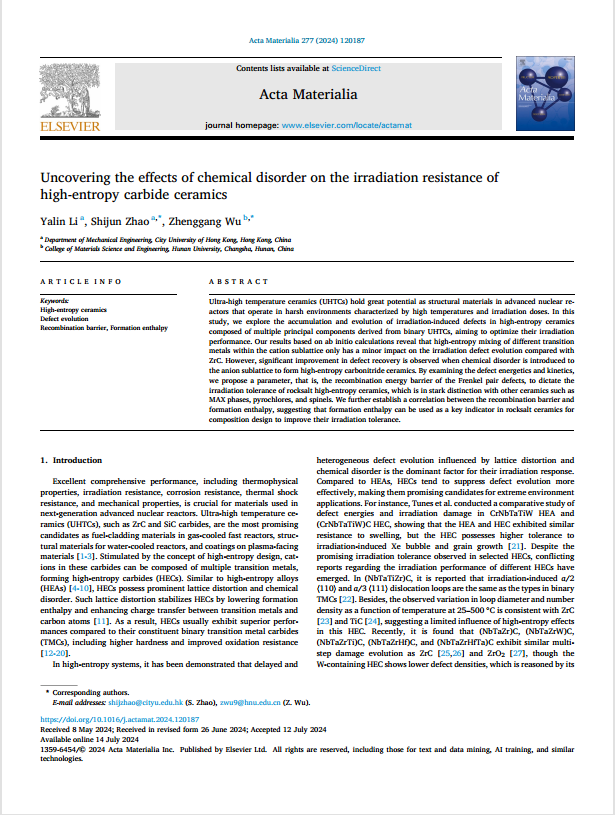Ultra-high temperature ceramics (UHTCs) hold great potential as structural materials in advanced nuclear reactors that operate in harsh environments characterized by high temperatures and irradiation doses. In this
study, we explore the accumulation and evolution of irradiation-induced defects in high-entropy ceramics
composed of multiple principal components derived from binary UHTCs, aiming to optimize their irradiation
performance. Our results based on ab initio calculations reveal that high-entropy mixing of different transition
metals within the cation sublattice only has a minor impact on the irradiation defect evolution compared with
ZrC. However, significant improvement in defect recovery is observed when chemical disorder is introduced to
the anion sublattice to form high-entropy carbonitride ceramics. By examining the defect energetics and kinetics,
we propose a parameter, that is, the recombination energy barrier of the Frenkel pair defects, to dictate the
irradiation tolerance of rocksalt high-entropy ceramics, which is in stark distinction with other ceramics such as
MAX phases, pyrochlores, and spinels. We further establish a correlation between the recombination barrier and
formation enthalpy, suggesting that formation enthalpy can be used as a key indicator in rocksalt ceramics for
composition design to improve their irradiation tolerance.
